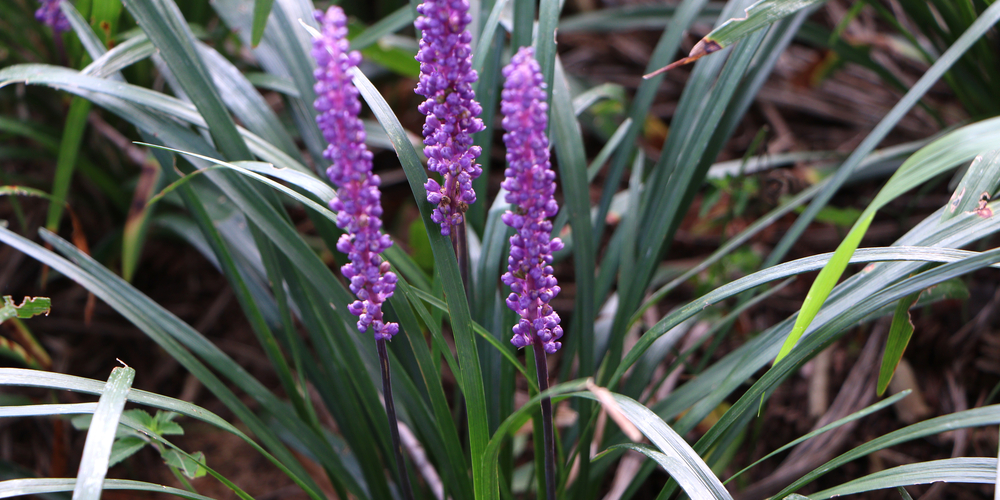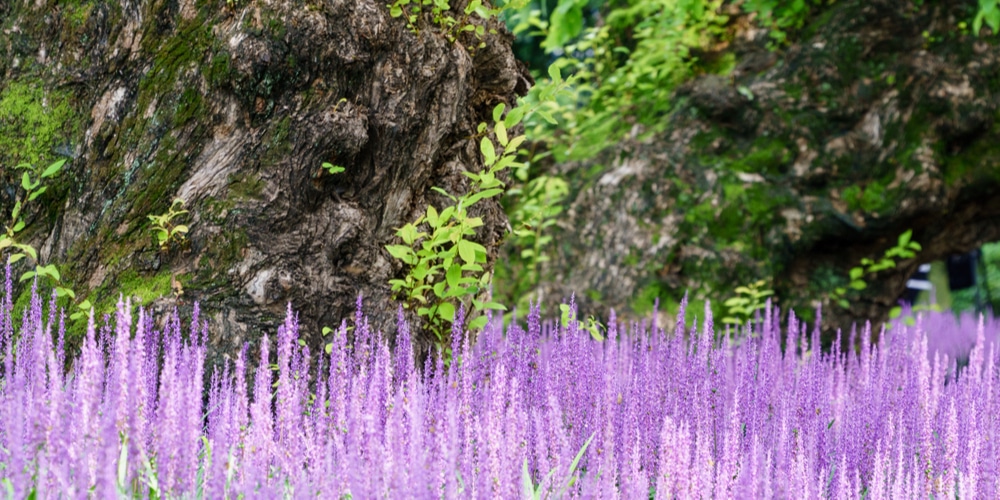The giant liriope in Texas, is a dense herbaceous evergreen perennial that makes an attractive groundcover, thanks to its forest green grass-like foliage. It is mainly grown for its attractive foliage and gorgeous lavender or violet-purple blooms that bring color to any landscape.

The flower spikes rise above the foliage in summer and morph into metallic-blue berries that remain in winter, adding a pop of color to your garden when most plants are dormant.
Of significance, while giant liriope plants are native to East and Southeast Asia, they thrive in a wide range of temperatures, soils, and light conditions. They are considered truly hardy for USDA planting zones 4 through 10.
If you are considering growing giant liriope, also known as giant lily turf, in your Texas yard, it is imperative to understand their growing requirement and the kind of care they need to grow best.
This post will cover how to grow and care for liriope, emphasizing growing in Texas.
Can giant liriope grow in Texas?
Often used as an ornamental or hedging plant, the giant liriope is a low-maintenance plant that thrives in many conditions. But can they grow in Texas?
Well, liriope plants grow well in plant hardiness zones 4 to 10. They are relatively drought-resistant, with low to average water needs.
Texas spans growing zones 6b to 10a. For the most part, this means gardeners in North and South Texas can grow these grass-like herbaceous flowering perennials with minimal challenges.
However, before deciding on whether or not to grow liriope, you need to understand each of their growing aspects so that you can grant them the utmost hospitality in your garden.
Due to its massive size, Texas has a widely varying climate, ranging from subtropical and humid in eastern parts to arid desert in the western. The state’s panhandle is relatively colder compared to the rest of the northern region, whereas the gulf coast experiences milder winters.
Thankfully, liriope plants can endure a vast range of environmental conditions, including humidity and periods of drought, hot, dry, windy environments, and frost or extremely cold weather.
Growing and caring for liriope
Liriope plants are not fussy with their growing requirements. They can grow in virtually all soil types, including sandy and clay soils, and flourish in both full sun and partial shade. However, like most plants, they need well-draining soil to grow best. As for alkalinity, slightly acidic to neutral is the best.
When it comes to planting, it is best to germinate the seeds before planting; this speeds up the growing process. Plant your giant liriope starts about 1-1.5 feet apart as they can spread up to 3 feet at maturity. Upon planting, consider these care tips to keep your plants happy and healthy.
- Watering: Liriope are generally drought-resistant plants, but not until they are well established in the soil. Whether you plant your starts in a cool shade or a sunny spot, water them regularly in the few days of planting to encourage the development of new root systems. When watering, allow the topsoil to dry slightly before watering again. Giant liriope are relatively drought-resistant when established. Even so, supplemental watering during summer can help keep them healthy.
- Fertilization: Liriope are not heavy feeders but can still benefit from moderate fertilizer in early spring. Apply a 10:10:10 fertilizer in early spring to encourage the plants to regrow and spread.
- Pruning: Although liriope plants don’t get very large, they can quickly get out of control, overtaking neighboring flowers and shrubs. If your plant appears to run wild, prune it as needed to control growth.
- Pests and disease control: Liriopes are deer-resistant but vulnerable to various diseases and pests. They are prone to leaf and crown rot, which shows up as yellow inner foliage. Another common issue is anthracnose, which shows up as reddish-brown spots. If you notice any of these signs, remove the affected parts immediately to prevent spreading.
- Winterizing: For gardeners living in the panhandle of Texas, it is a good idea to cover your liriope plant’s root structure during winter to prevent damage by frost. A layer of organic moisture should do the trick.
Generally, liriope are hardy growers requiring little to no care once after establishing themselves. They can also survive most conditions without suffering severely.
Conclusion
Giant liriope plants are an excellent choice for landscaping. With their grass-like foliage, purple flowers, and colorful berries, you can be sure they will add color to your garden.
Related Article: Tall Ornamental Grasses For Privacy

